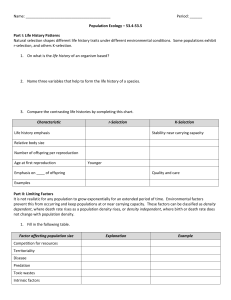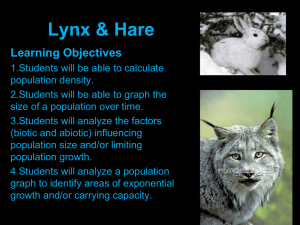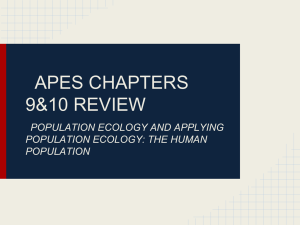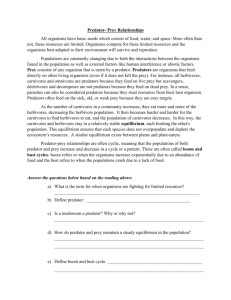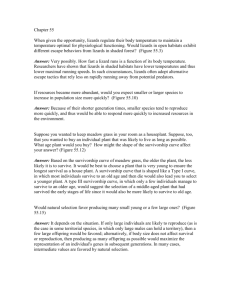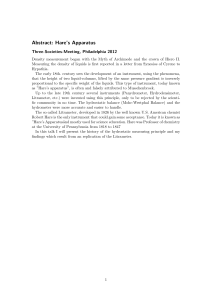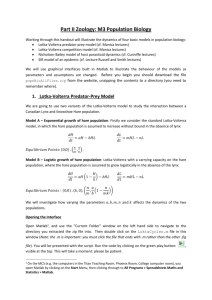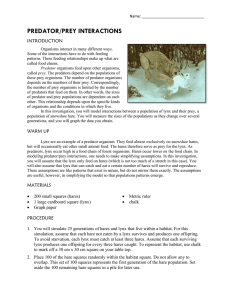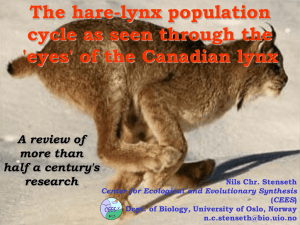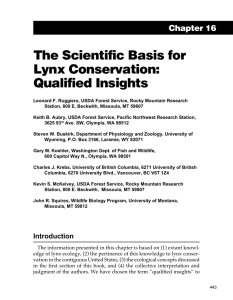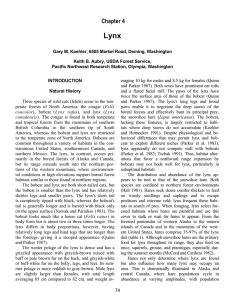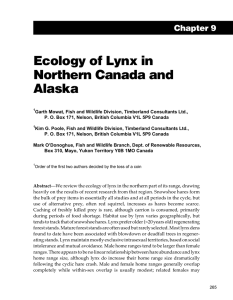Add Header – ODE Apple, no shaping - ODE IMS
advertisement
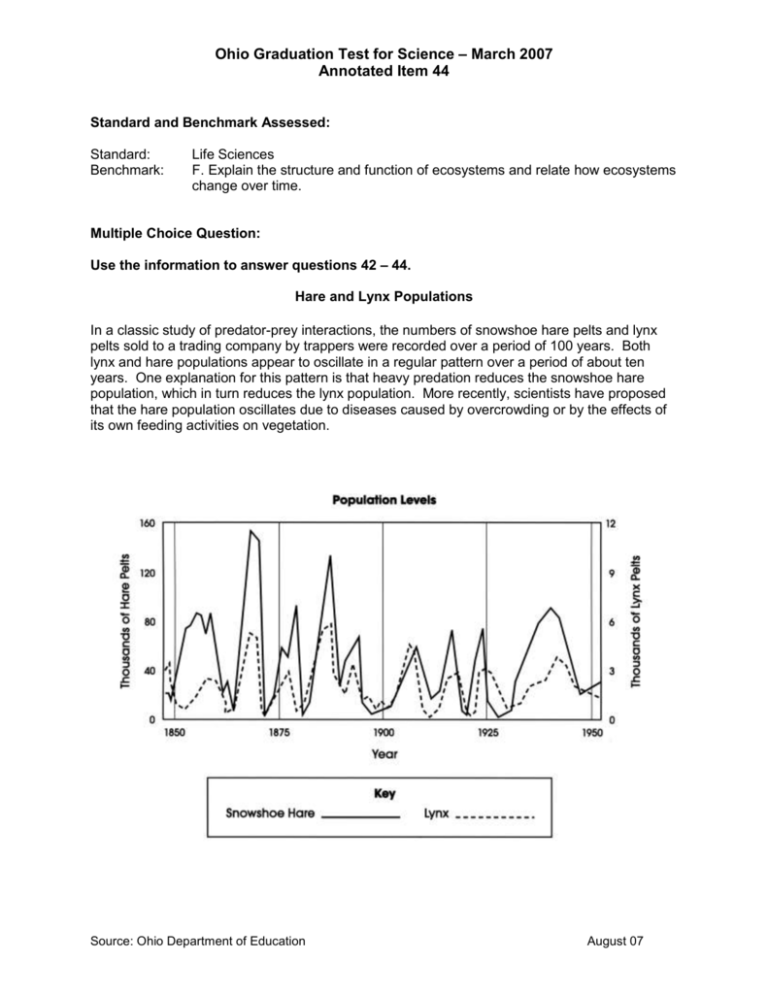
Ohio Graduation Test for Science – March 2007 Annotated Item 44 Standard and Benchmark Assessed: Standard: Benchmark: Life Sciences F. Explain the structure and function of ecosystems and relate how ecosystems change over time. Multiple Choice Question: Use the information to answer questions 42 – 44. Hare and Lynx Populations In a classic study of predator-prey interactions, the numbers of snowshoe hare pelts and lynx pelts sold to a trading company by trappers were recorded over a period of 100 years. Both lynx and hare populations appear to oscillate in a regular pattern over a period of about ten years. One explanation for this pattern is that heavy predation reduces the snowshoe hare population, which in turn reduces the lynx population. More recently, scientists have proposed that the hare population oscillates due to diseases caused by overcrowding or by the effects of its own feeding activities on vegetation. Source: Ohio Department of Education August 07 Ohio Graduation Test for Science – March 2007 Annotated Item 44 44. What would prevent the lynx population from declining along with the hare population? A. B. C. D. an extremely harsh winter an influx of other hare predators an abundant alternate food source an outbreak of disease among hares Commentary: This multiple choice question asks students to predict and identify what would prevent the lynx population from declining along with the hare population. Students can observe that the data shows a direct connection between hares and lynx. As the number of hares increases, the lynx numbers increase and the opposite is also true. Students should recognize that these simultaneous fluctuations in population size indicate that the hare are a primary food source for the lynx. Answer choice C is correct because if the lynx had an alternate source of food, the lynx population would not be expected to decline dramatically with the hare population. Answer choice A is incorrect because an extremely harsh winter would be likely to negatively impact both the hare and lynx populations. Answer choice B is incorrect because an influx of other hare predators would negatively impact the lynx population by introducing competition for the lynx’s food source. Answer choice D is incorrect because disease among the hares would reduce the food source of the lynx and could result in a decrease in the lynx population. This question is classified as Communicating Understanding / Analyzing Science Information because the task requires students to evaluate the data for hare and lynx populations to determine the relationship between the two organisms and predict how changes in one population or in other environmental factors will impact this relationship. Performance Data: The percent of public school students selecting answer choice C for question 44 on the March 2007 Ohio Graduation Test was 66%. Keywords: ecosystem, population Source: Ohio Department of Education August 07
